Introduction
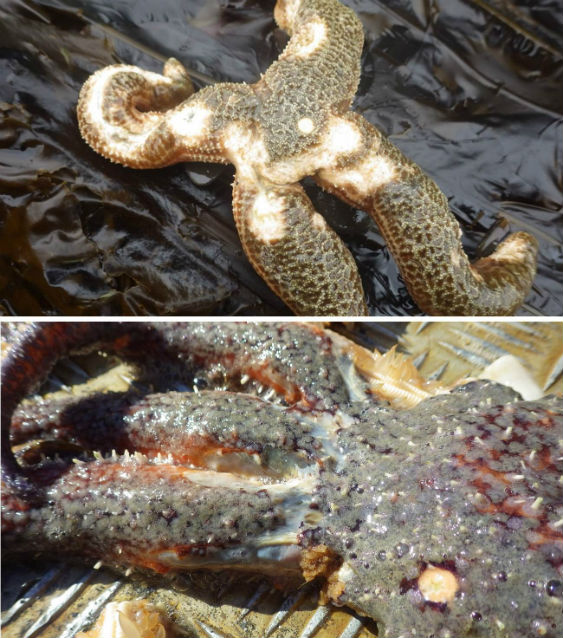
COURTESY K. IKEN
Sea stars play a vital ecological role as top level predators shaping nearshore ecosystems. The absence of sea stars can enable other organisms that sea stars eat, like mussels, to multiply and drive out other nearshore inhabitants. An epidemic wasting disease, caused by a virus (Hewson et al. 2014) began in 2013, affecting sea stars from Alaska to Baja California, Mexico. A recent paper suggests that warmer water temperatures in the Pacific Ocean could have increased the spread of the disease and the high rates of sea star death in Washington State (Eisenlord et al. 2016).
The epidemic affects at least 20 sea star species, and sea star populations along the west coast of the U.S. have experienced very high levels of death. As the disease progresses, sea stars often lose arms and can have a jelly-like appearance. Death can occur within a few days of the initial signs of infection. This disease has been observed in several locations in southeast Alaska, and more recently in Western Prince William Sound and Kachemak Bay.
Methods
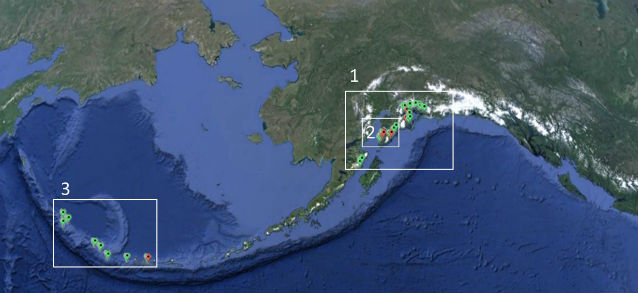
The National Park Service, in partnership with the U.S. Geological Survey, the University of Alaska, Fairbanks (UAF), the National Oceanic Atmospheric Administration (NOAA), and GulfWatch Alaska began a concerted effort to look for the disease in southcentral Alaska starting in 2014. Researchers from various institutions searched for the disease at long-term GulfWatch Alaska monitoring sites in Prince William Sound (1), Kenai Fjords National Park (1), Katmai National Park and Preserve (1), and in Kachemak Bay (2). GulfWatch Alaska collaborators from UAF also investigated sites in the Western Aleutian Islands (3), outside the scope of this long-term monitoring program.
Findings
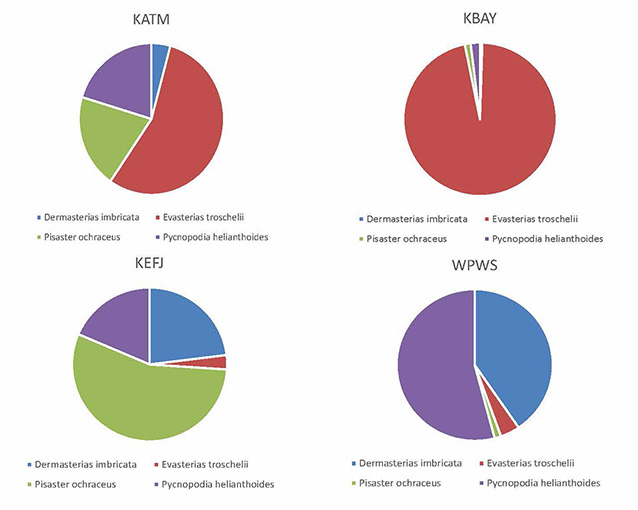
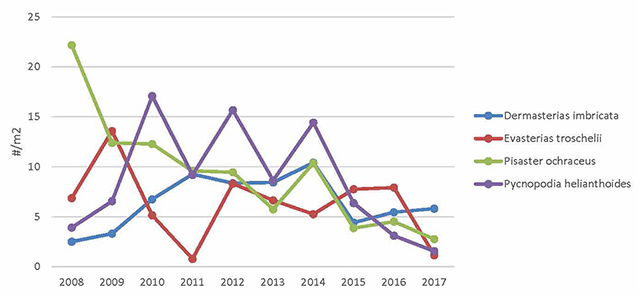
How you can help
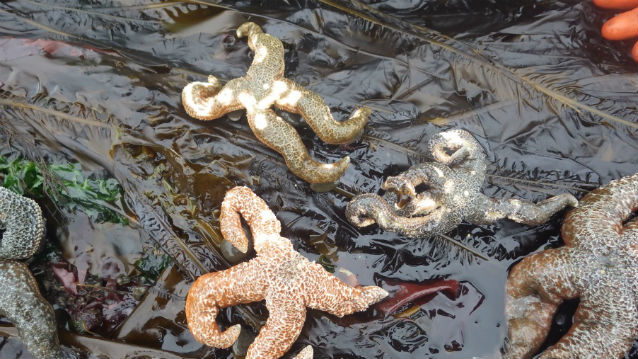
COURTESY K. IKEN
Many sea stars can exhibit bodily damage, due to impact injuries from boulders moved by large waves, exposure to freshwater, and predators. These injuries can be confused with wasting
disease, but you can visit seastarwasting.org for comprehensive identification guides. We encourage the use of citizen science in collecting data on diseased sea stars. If you observe a sea star that exhibits signs of this disease, please take a photograph, note the location and date, and send to: mandy.lindeberg@noaa.gov, kbiken@alaska.edu, or bhkonar@alaska.edu.
For more information
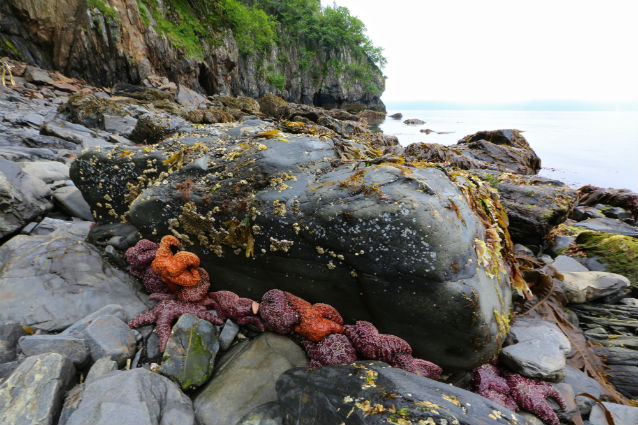
NPS/Jim Pfeiffenberger
Contact Heather Coletti, heather_coletti@nps.gov or
https://www.nps.gov/im/swan/
Benjamin Pister, benjamin_pister@nps.gov
https://www.nps.gov/rlc/oceanalaska/index.htm
Check out this recent article from The Atlantic magazine.
Eisenlord, M., et al. (2016) Ochre star mortality during the 2014 wasting disease epizootic: role of population size structure and temperature
Hewson, I., et al. (2014) Densovirus associated with sea star wasting disease and mass mortality. PNAS 111 pp.17281-17283
Click here to print a copy of this article.
Updated February 2019

Tags
- katmai national park & preserve
- kenai fjords national park
- sea star
- sea star wasting disease
- alaska
- inventory and monitoring
- ocean alaska science and learning center
- oaslc
- kenai fjords coast
- prince william sound
- aleutian islands
- southwest alaska im network
- southwest alaska network
- resource brief
- intertidal zone
- marine invertebrates
- ak1
Last updated: October 26, 2021
